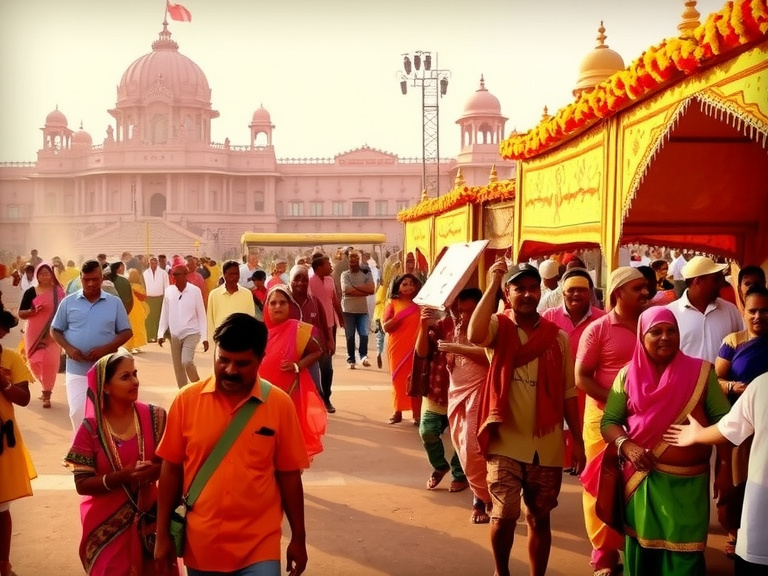
Table of Contents
Introduction
Rajasthan, commonly referred to as the “Land of Kings,” is a state that is one of the most vibrant in India, with its imposing forts, stately palaces, and expansive desert dunes.
But behind the monumental architecture and royal heritage is another gem—the living culture of its people, commemorated through festivals.
The Festivals of Rajasthan are not merely celebrations of entertainment; they are the pulsating lifeblood of its people, where history and art, faith and joy are blended into unforgettable pageants.
In contrast to ephemeral contemporary events, Rajasthan’s Festivals remain true to their traditional roots.
They are celebrated with centuries-old rituals and customs passed down from generation to generation.
Some are associated with the change of season, like the onset of the monsoon or the harvesting season; others commemorate gods, saints, and heroes whose memories run deep in Rajasthan’s heritage.
There are also festivals which developed from the desert lifestyle, capturing the struggles and imagination of desert peoples.
What makes them special is the sheer magnitude and variety.
Whether it is Pushkar camel fair that draws international travelers, spiritual Ajmer Urs where religion brings people together, or Jaipur’s vibrant Teej celebrating womanhood and nature, every festival has special significance but together they symbolize Rajasthan’s cultural heritage.
This blog delves into 10 legendary Festivals of Rajasthan that any tourist and lover of culture has to witness at least once in their lifetime.
Why Festivals of Rajasthan Are So Special
The magic of the Festivals of Rajasthan lies in their capacity to unify entertainment, devotion, and history in a single colorful tapestry.
Unlike regular festivals, they are sprawling works of cultural art wherein music, dance, cuisine, rituals, and crafts meet.
2.1 Historical Roots
Most of Rajasthan’s festivals have origins dating back to royal customs. It was once patronized by Rajput queens and kings who made sure that all festivals were celebrated with opulence.
For example, Gangaur and Teej were celebrated in royal palaces with ceremonial processions that then extended to villages and towns.
The festivals maintained traditional customs even as centuries went by.
2.2 Cultural Showcase
The celebrations are platforms for Rajasthan’s folk culture—Kalbeliya dance, Ghoomar, puppetry, and Manganiyar music.
Local craftsmen exhibit their wares, from block printing to pottery, so that these festivals become not only entertainment but also bazaars for maintaining cultural heritage.
2.3 Spiritual Depth
Various festivals are associated with profound spiritual significance. The Urs Festival at Ajmer, for example, attracts people of all religions, promoting unity and devotion. Likewise, Brij Holi at Bharatpur brings back Krishna’s myths, blending celebration and devotion.
2.4 Tourism and Unity
Today, Rajasthan’s Festivals are visited by international travelers. They are chances for cultural exchange where locals and tourists engage with each other.
They also bring cohesion among different communities with values of harmony being strengthened.
Major Rajasthan Festivals You Need to Visitr
3.1 Desert Festival, Jaisalmer
Held annually in the golden city of Jaisalmer, this festival transforms the endless sands of the Thar Desert into a stage of vibrant performances, traditional competitions, and cultural extravaganzas.
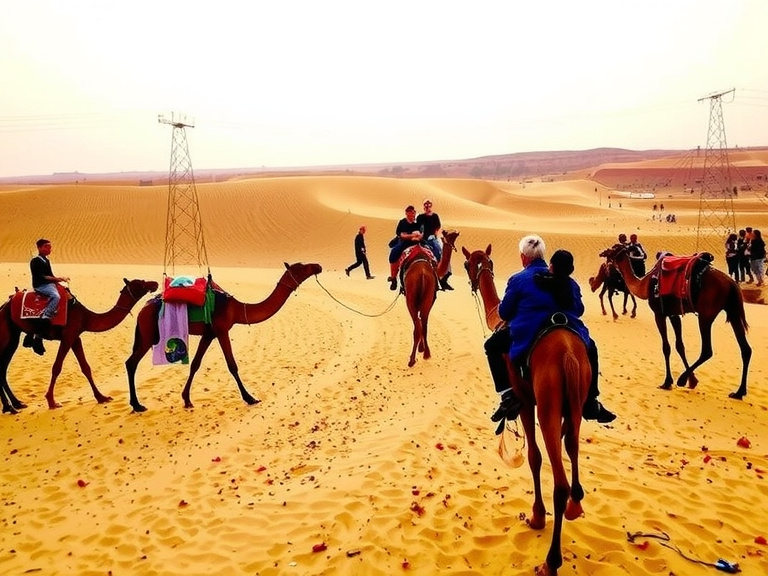
Among the most iconic Festivals of Rajasthan, the Desert Festival of Jaisalmer is a celebration that captures the very soul of desert life.
Usually celebrated in the month of February, the festival attracts thousands of domestic and international tourists who come to witness the colorful heritage of Rajasthan against the backdrop of the majestic Jaisalmer Fort and sweeping sand dunes.
Origins and Rituals
The festival commemorates the desert culture of Rajasthan. In the past, it was a season of gathering for desert tribes, trading, and merriment after the harsh winters. Nowadays, it keeps its traditional flavor with activities such as turban tying, best-moustache contests, and camel races.
Highlights
Camel polo matches and camel dances.
Puppet shows recounting folk stories.
Gair and Kalbeliya dance performances.
Night finale at the Sam Sand Dunes under a full moon.
Cultural Significance
The Desert Festival is a testament to the fortitude of desert peoples.
It celebrates their capacity to adapt to arid environments and the diversity of their cultural traditions.
3.2 Pushkar Camel Fair
When it comes to the Festivals of Rajasthan, few events are as iconic, colorful, and culturally vibrant as the Pushkar Camel Fair.
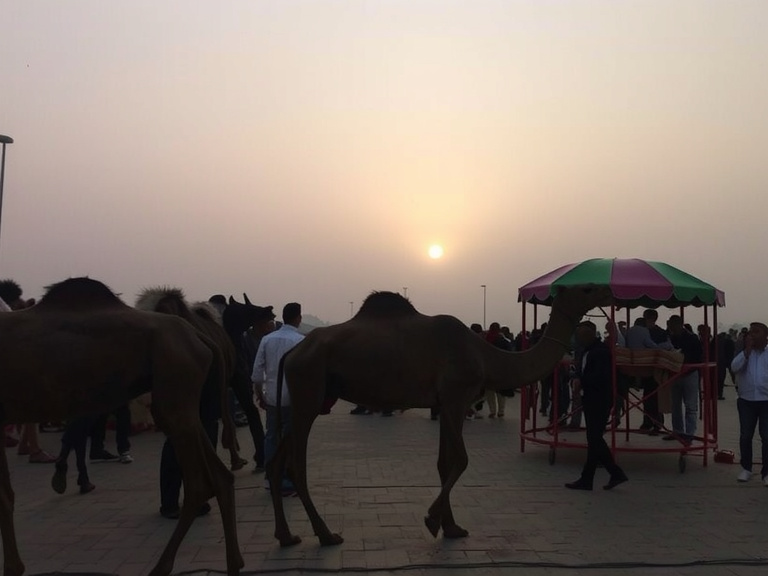
Held annually in the holy town of Pushkar, near Ajmer, this fair is not only a traditional livestock trading event but also a cultural extravaganza that has become one of the most famous festivals in India.
Originally, the fair was a marketplace where local traders and herders from Rajasthan gathered to buy and sell camels, horses, and cattle.
Over time, it evolved into a grand cultural festival that attracts travelers, photographers, and spiritual seekers from across the globe.
Today, the Pushkar Camel Fair beautifully blends the traditional roots of Rajasthan’s desert economy with its cultural richness and festive spirit.
Pushkar is a holy town with the sole temple for Lord Brahma. The fair has existed centuries ago when camel and cattle merchants used to assemble here, coinciding with pilgrims to the Pushkar Lake during Kartik Purnima.
Festivities
Camel business with thousands of camels dressed in bright ornaments.
Camel beauty pageants and races.
Music, folk dances, and acrobats.
Hot air balloon rides providing bird’s view of the desert fair.
Spiritual Dimension
Pilgrims bathe in holy waters of Pushkar Lake, said to cleanse them of sin. The combination of religiosity with festive fervor makes the Pushkar Fair so distinctive.
3.3 Teej Festival, Jaipur
Among the Festivals of Rajasthan, the Teej Festival of Jaipur stands out as a vibrant celebration of womanhood, devotion, and tradition.
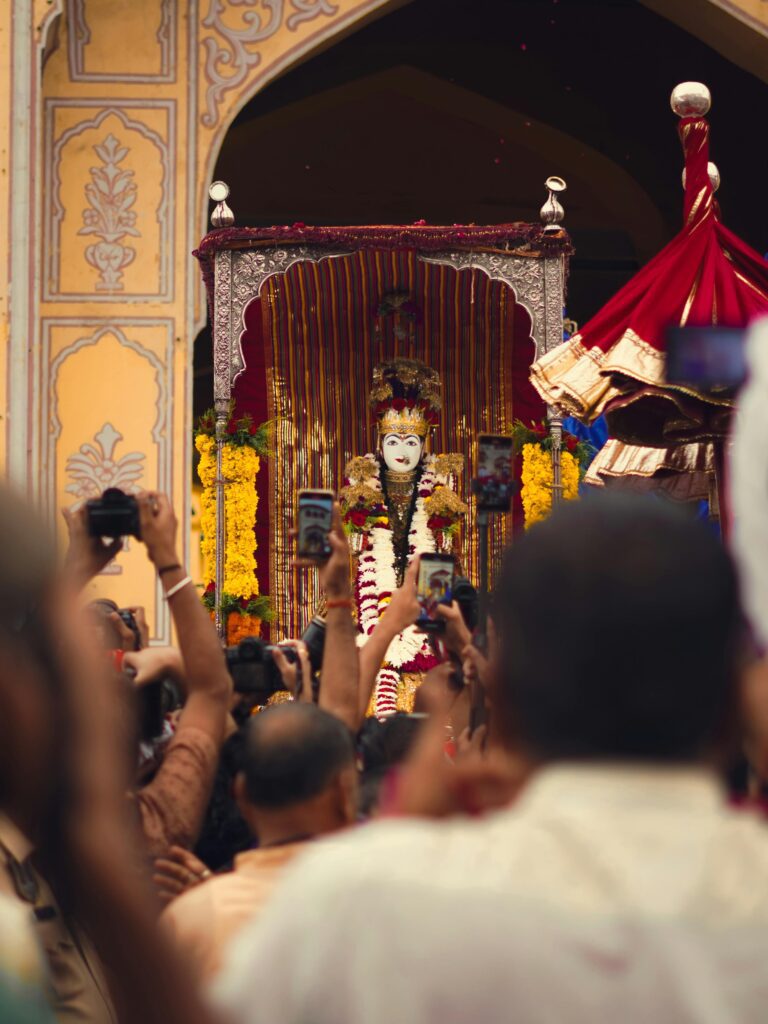
Observed with grandeur in the Pink City, Teej is primarily dedicated to Goddess Parvati and commemorates her union with Lord Shiva.
It is considered a deeply traditional and cultural festival that highlights the spiritual beliefs, social customs, and artistic heritage of Rajasthan.
The festival takes place during the monsoon season (July–August), a time when the parched desert lands receive refreshing rains.
Symbolically, Teej represents renewal, fertility, and prosperity, making it a joyous occasion for women across Rajasthan.
Married women pray for the long life and well-being of their husbands, while unmarried girls seek blessings for a good life partner.
Rituals
Married women pray for happiness in marriage, and unmarried girls pray for a suitable match.
The idol of the goddess is removed in ceremonial processions in Jaipur, to the accompaniment of folk music, elephants, and decorated palanquins.
Traditions
Women dress in green sarees and apply henna.
Swaying on ornate swings in the monsoon rain.
Special sweets such as ghevar are made.
Cultural Significance
Teej symbolizes the profound relationship between Rajasthan’s dry land and nourishing rains. It is a celebration of womanhood, fertility, and prosperity, and it is one of the most traditional and cultural Festivals.
3.4 Gangaur Festival
Gangaur, one of the significant women-centric festivals, is one of the oldest Festivals of Rajasthan.
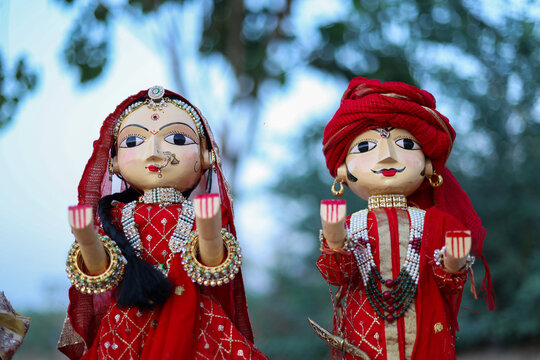
It is observed throughout the state but is particularly popular in Jaipur, Jodhpur, and Udaipur.
Rituals
The festival is celebrated for 18 days. Women pray to Goddess Gauri, the spouse of Lord Shiva, for prosperity and marital bliss. Clay idols of Gauri, adorned with ornaments, are carried in processions through the streets.
Cultural Touch
Songs, dances, and rituals make it a strongly traditional celebration. Women express their devotion as well as revel in the festive ambiance. Immersion in water bodies brings it to a close.
3.5 Mewar Festival, Udaipur
Observed with Gangaur, the Mewar Festival in Udaipur is a spectacular event of springtime gaiety.
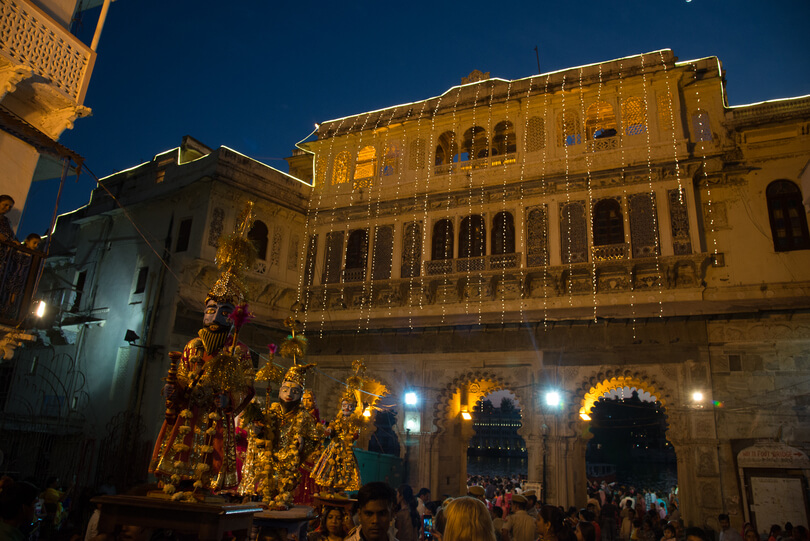
Rituals and Celebrations
Idols of Isar (Shiva) and Gangaur are taken out in processions to Lake Pichola, where they are submerged. The city is festooned with lights and flowers.
Highlights
Folk music and dance performances.
Cultural shows amidst the backdrop of Udaipur’s palaces.
Fireworks illuminating the night sky.
Cultural Importance
This festival represents the royal heritage of the Mewar dynasty while honoring traditional customs. It is both spiritual and festive, blending devotion with artistry.
3.6 Elephant Festival, Jaipur
Unique among the Festivals of Rajasthan, the Elephant Festival is celebrated on the eve of Holi in Jaipur.

Festivities
Elephants are also decorated with embroidered cloth, ornaments, and painted in natural colors. An elephant, camel, and horse procession takes place, followed by games such as elephant polo and tug-of-war.
Traditional Bond
The festival showcases Rajasthan’s past cultural affinity towards elephants, which were previously employed in royal functions and battles. Their appearance stands for strength, dignity, and wealth.
3.7 Nagaur Cattle Fair
The Nagaur Cattle Fair is the second-largest cattle fair in India. The fair is conducted in Nagaur town and is a combination of trade as well as celebration.

Activities
Sale and purchase of camels, bullocks, and horses.
Rural games such as tug-of-war and camel racing.
Folk music, puppetry, and storytelling.
Traditional Significance
It showcases rural Rajasthan’s reliance on cattle for sustenance. The fair also retains culture traditions of adorning animals with ornaments and colorful patterns.
3.8 Kite Festival, Jaipur (Makar Sankranti)
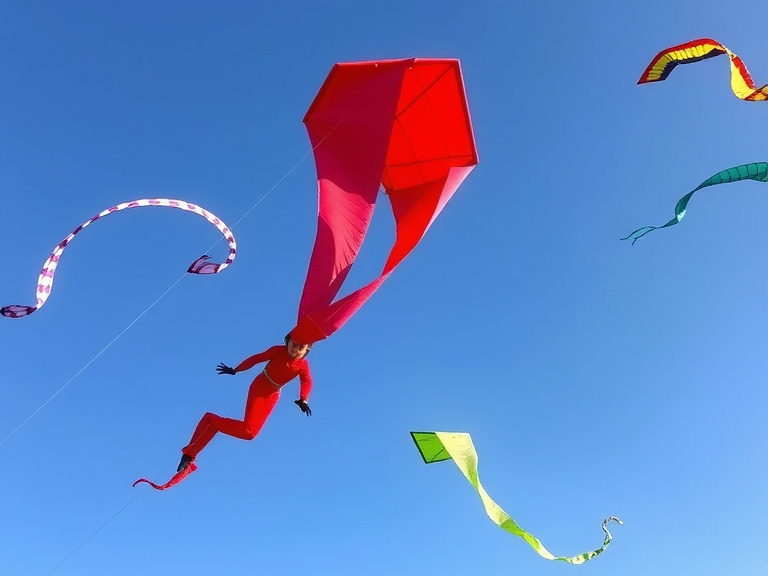
The Kite Festival is among the most vibrant Festivals of Rajasthan. It is celebrated on Makar Sankranti, the month of January, and converts the sky into a sea of kites.
Traditions
Breed families sit on the rooftops, flying kites to music beats. There are competitions to slice down opponents’ kites. Traditional sweets like til ke laddoo and ghevar are made.
Cultural Meaning
The festival commemorates the sun’s entry into Capricorn. It is a sign of hope, harvest, and togetherness. The view of thousands of kites flying high above Jaipur provides a distinctly traditional scene.
3.9 Brij Holi, Bharatpur
Among the many Festivals of Rajasthan, Brij Holi celebrated in Bharatpur holds a special place because it combines devotion, tradition, and sheer cultural joy.
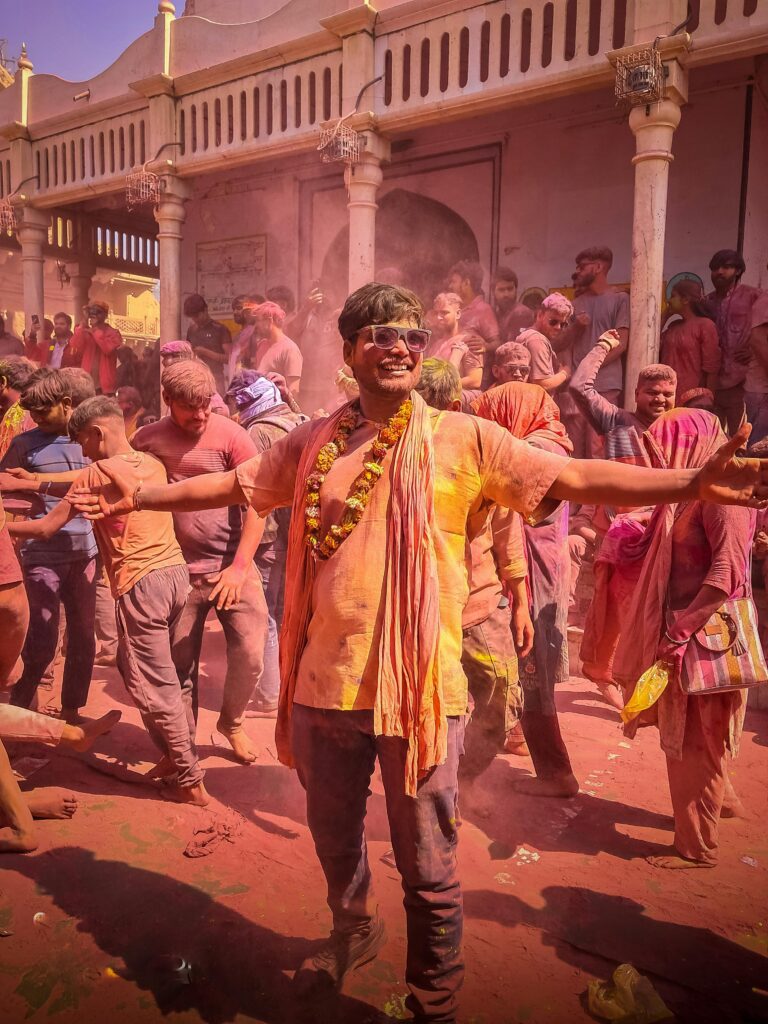
Unlike the regular Holi that people across India celebrate with colors, the Brij Holi of Bharatpur is a deeply traditional festival rooted in the stories of Lord Krishna and Radha. Bharatpur, part of the Braj or Brij region, is said to be blessed by the footsteps of Krishna himself, and the festival here is not just about throwing colors—it is a cultural expression of divine love, music, dance, and faith..
Rituals
Devotees engage in color play, sing bhajans, and dance Raslila, which is a depiction of Krishna’s life. Temples are transformed into devotional and festive hubs.
Cultural Value
Brij Holi is a mix of spirituality and amusement. It maintains the traditional legends about Krishna’s mischievous pastimes and makes both divine and happy.
3.10 Urs Festival, Ajmer Sharif
Among the many Festivals of Rajasthan, the Urs Festival at Ajmer holds a place of deep reverence and spiritual importance.
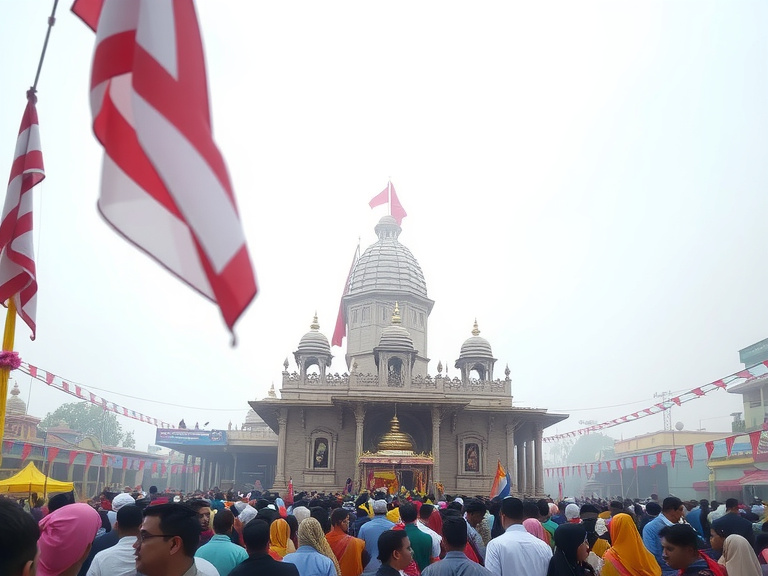
Celebrated at the sacred Ajmer Sharif Dargah, this festival commemorates the death anniversary of the great Sufi saint Khwaja Moinuddin Chishti, who is lovingly remembered as “Gharib Nawaz” — the benefactor of the poor.
Unlike most festivals that are filled with dance, colors, and grandeur, Urs is a deeply spiritual and devotional gathering, attracting lakhs of pilgrims and visitors not only from Rajasthan and India but also from across the world.
Rituals
Devotees visit Ajmer Sharif Dargah to join qawwalis, prayers, and offerings. The air is filled with spirituality, music, and devotion.
Cultural Significance
The Urs Festival is unique among the Festivals of Rajasthan in that it has no exclusivity. Individuals of all religions join, and thus it is a symbol of harmony and unity.
Cultural Significance of Rajasthan’s Festivals
The Festivals of Rajasthan conserve the state’s living heritage. They protect folk music, art, and rituals so they get transmitted to the coming generations. They also give opportunities to artisans, keeping traditional crafts alive.
On a social level, festivals consolidate community ties. They unite individuals from different backgrounds to celebrate joy and devotion. Economically, they pull in tourists, exciting local commerce. Spiritually, they strengthen values of devotion, harmony, and respect for nature.
Best Time to Enjoy Festivals in Rajasthan
Rajasthan’s festivals are disbursed throughout the year:
January: Kite Festival (Jaipur)
February: Desert Festival (Jaisalmer), Nagaur Cattle Fair
March: Holi and Brij Holi
July–August: Teej Festival
March–April: Gangaur and Mewar Festival
November: Pushkar Camel Fair
December–January: Urs Festival (dates change with lunar calendar)
October to March is the best time because it has nice weather, and tourists find it convenient to experience outdoor celebrations.
Conclusion
The Festivals of Rajasthan are not just seasonal events; they are the living heartbeat of a land that has always celebrated life, resilience, and togetherness amidst the vast deserts and royal palaces.
Every festival — whether it is the grandeur of Pushkar Camel Fair, the divine devotion of Gangaur, the riot of colors in Holi, or the mesmerizing lights of Diwali — adds a unique hue to the canvas of Rajasthan’s identity.
Together, these celebrations form a rhythm that reflects the harmony between traditional customs and cultural values, passed down from generation to generation.
When one witnesses the Festivals of Rajasthan, it feels as if history, folklore, and spirituality come alive in the streets, temples, havelis, and deserts of this vibrant state.
Each event carries layers of meaning — Gangaur honors feminine power and marital devotion, Teej celebrates the arrival of monsoon and fertility, Mewar Festival glorifies Rajput valor and heritage, and Desert Festival of Jaisalmer showcases the resilience of desert life with unmatched artistry.
These aren’t just dates on a calendar; they are cultural milestones that bring together communities, strengthen social bonds, and remind people of their timeless traditions.
The importance of these festivals extends far beyond rituals and entertainment. They play a significant role in preserving folk arts, music, dance, puppet shows, and oral storytelling — traditions that might otherwise fade in the face of modernity.
Local artisans, musicians, and performers find recognition and livelihood through these vibrant gatherings, ensuring that the cultural fabric of Rajasthan remains intact.
Moreover, the cuisine prepared during these times — from ghewar and malpua to dal baati churma — adds flavor and richness, connecting food with festivity in a way that is uniquely Rajasthani.
Another layer that makes these celebrations unforgettable is the deep sense of hospitality. During the Festivals of Rajasthan, strangers become friends, and guests are treated as family.
The warmth of the people, combined with the grandeur of processions, folk performances, and temple rituals, creates an immersive experience that touches the heart of every traveler.
This blend of tradition, faith, and collective joy ensures that Rajasthan’s festivals are remembered long after the celebration has ended.
In a globalized world where many societies are moving away from rituals and heritage, Rajasthan stands as a beacon, reminding us that culture is not just about the past — it is about continuity, resilience, and identity.
By celebrating these festivals with such devotion and enthusiasm, Rajasthan not only preserves its glorious history but also showcases it to the world as an enduring treasure.
Ultimately, the Festivals of Rajasthan are more than spectacles — they are lessons in unity, devotion, creativity, and joy.
They embody the richness of traditional values, the vibrancy of cultural expression, and the timeless beauty of human connection. To witness them is to understand Rajasthan in its truest essence — colorful, spiritual, regal, and unforgettable..

Pingback: Teej Festival: 7 Colorful Celebrations of Haryali Teej & Cultural Festival - Padharodesh
Pingback: Gangaur Festival: 7 Amazing Facts About Gangaur Pooja & Isar Gangaur - Padharodesh
Pingback: Kite Festival: 7 Exciting Facts About Makar Sankranti Celebration - Padharodesh